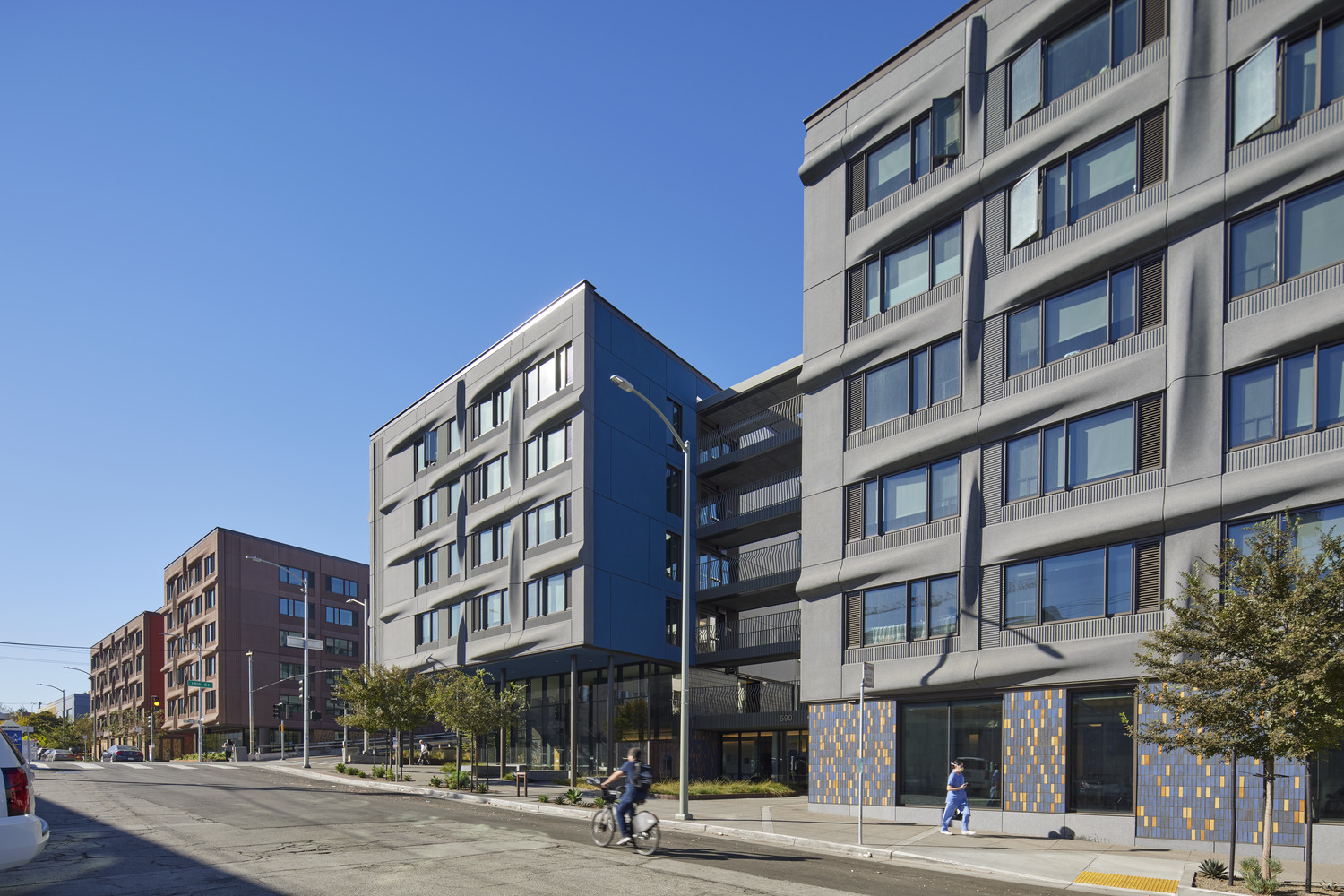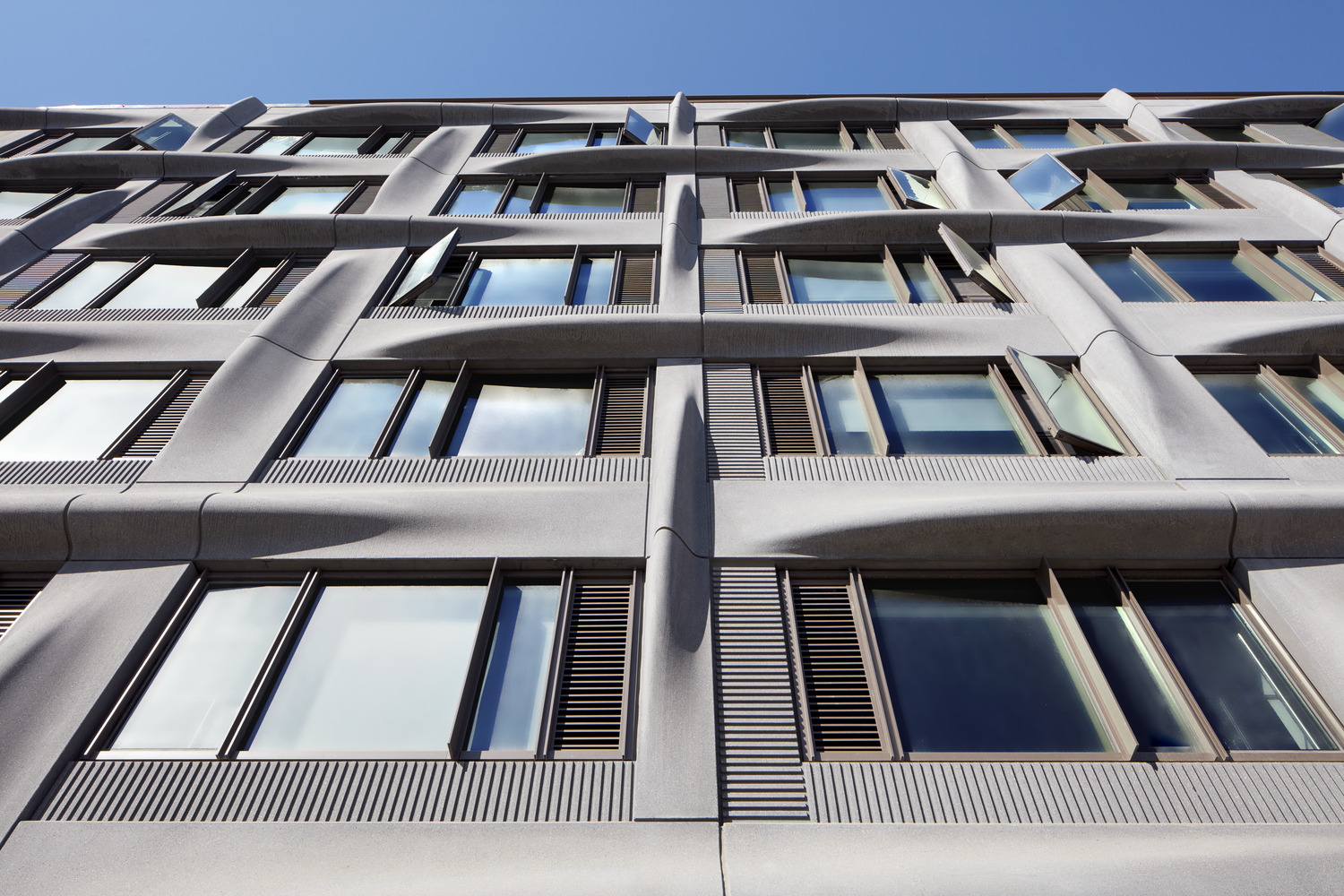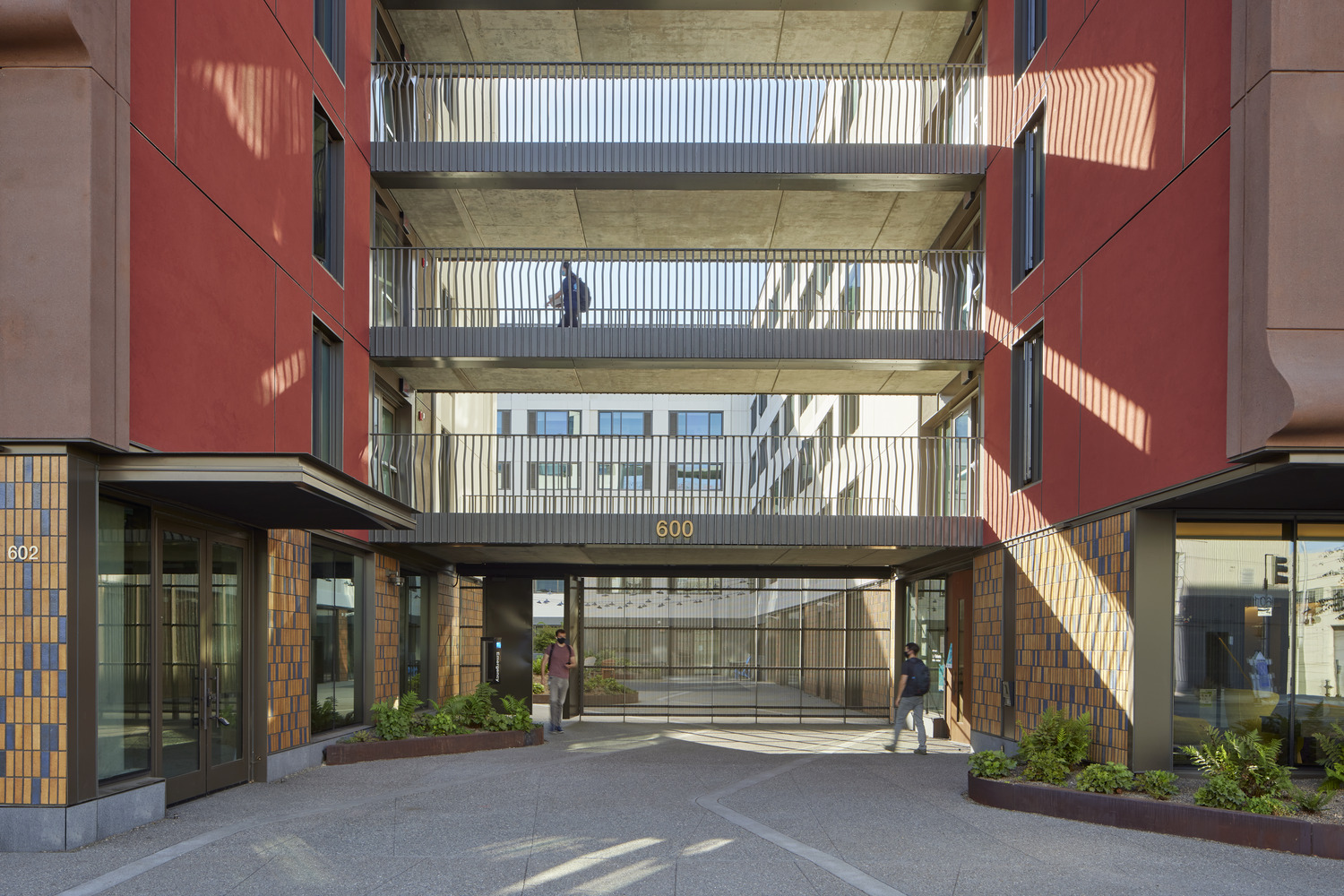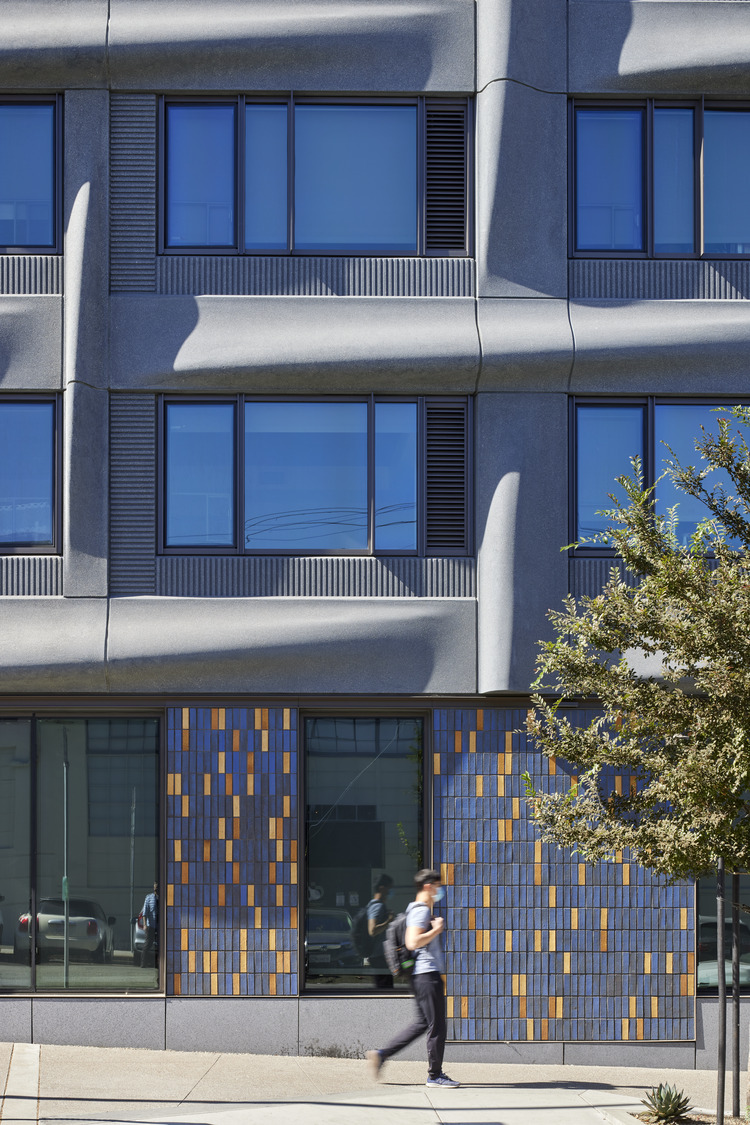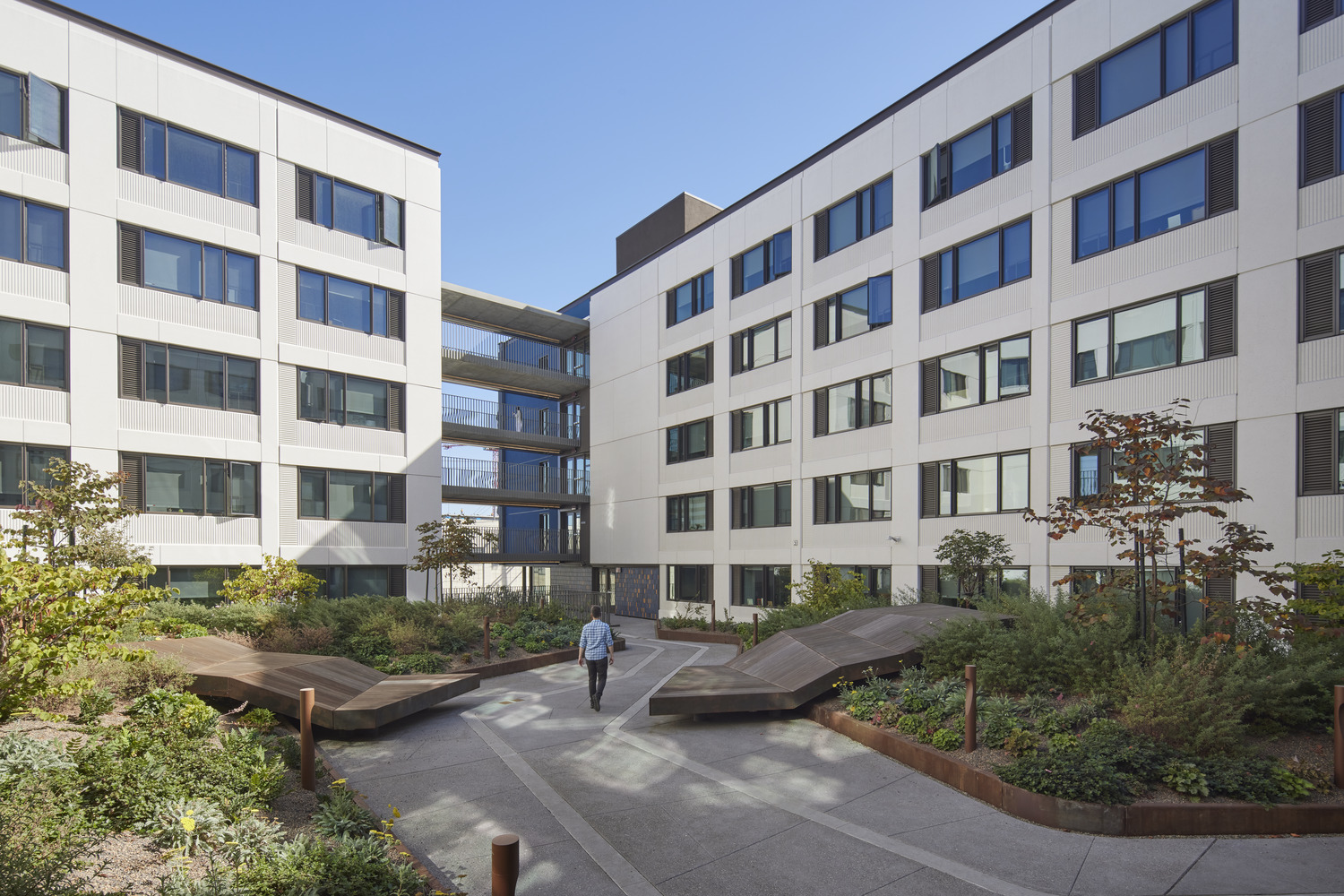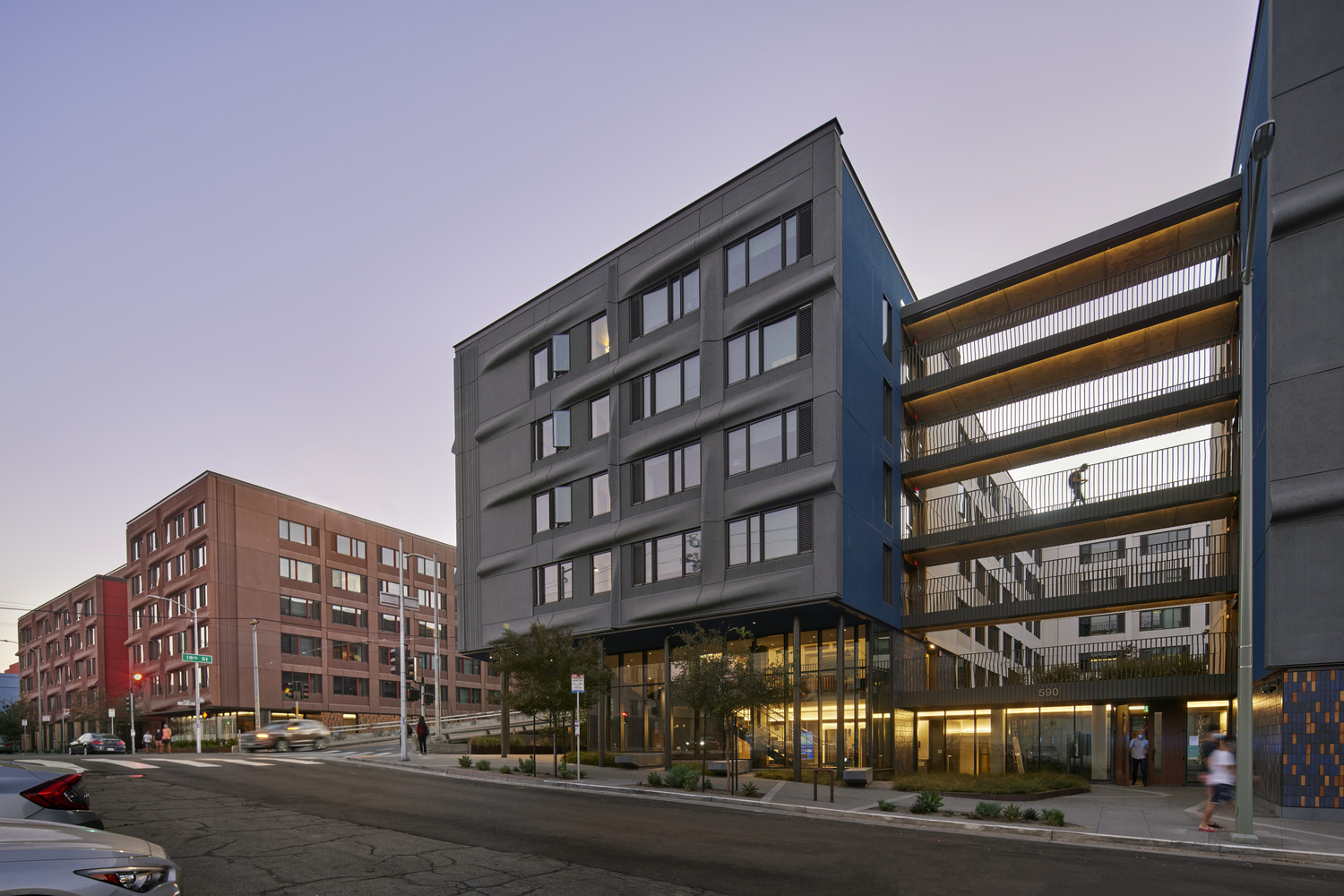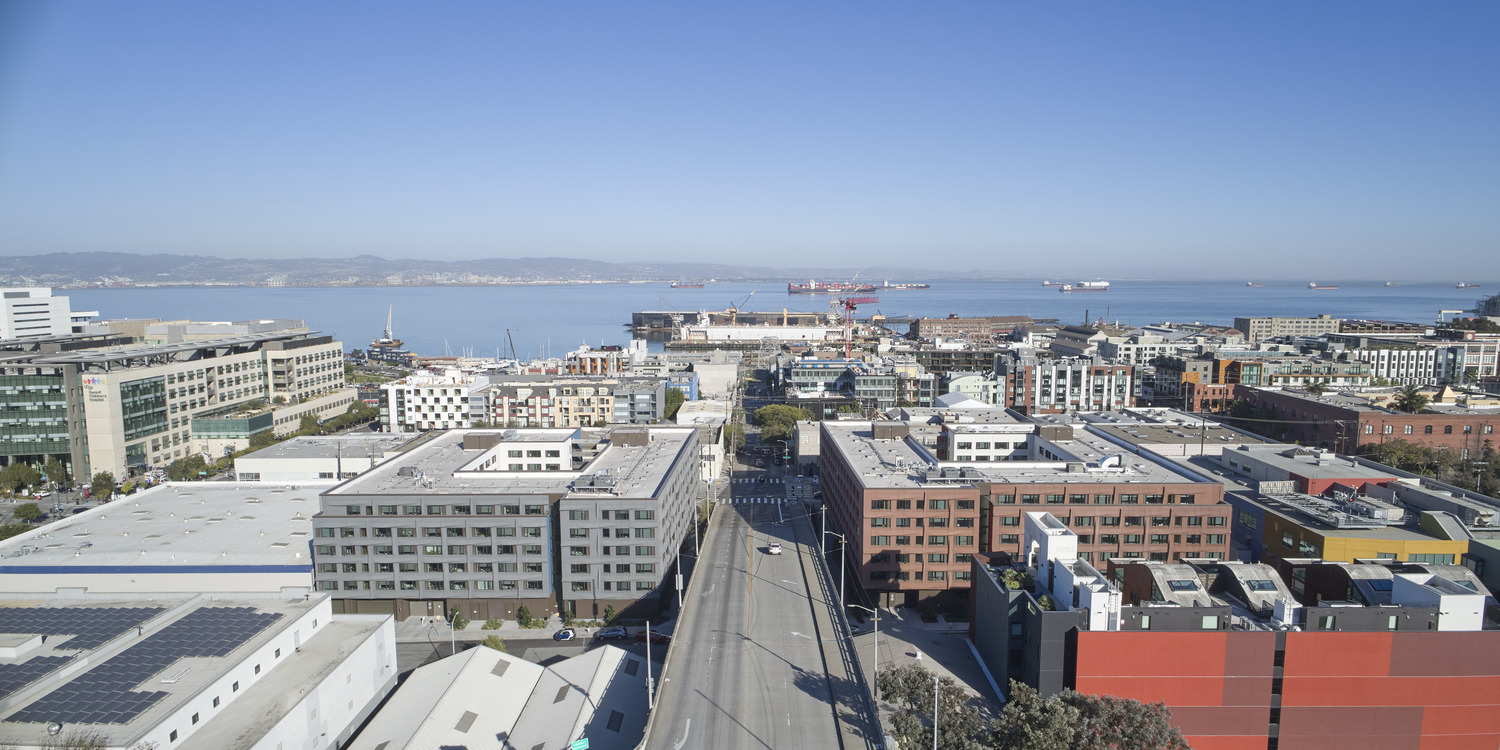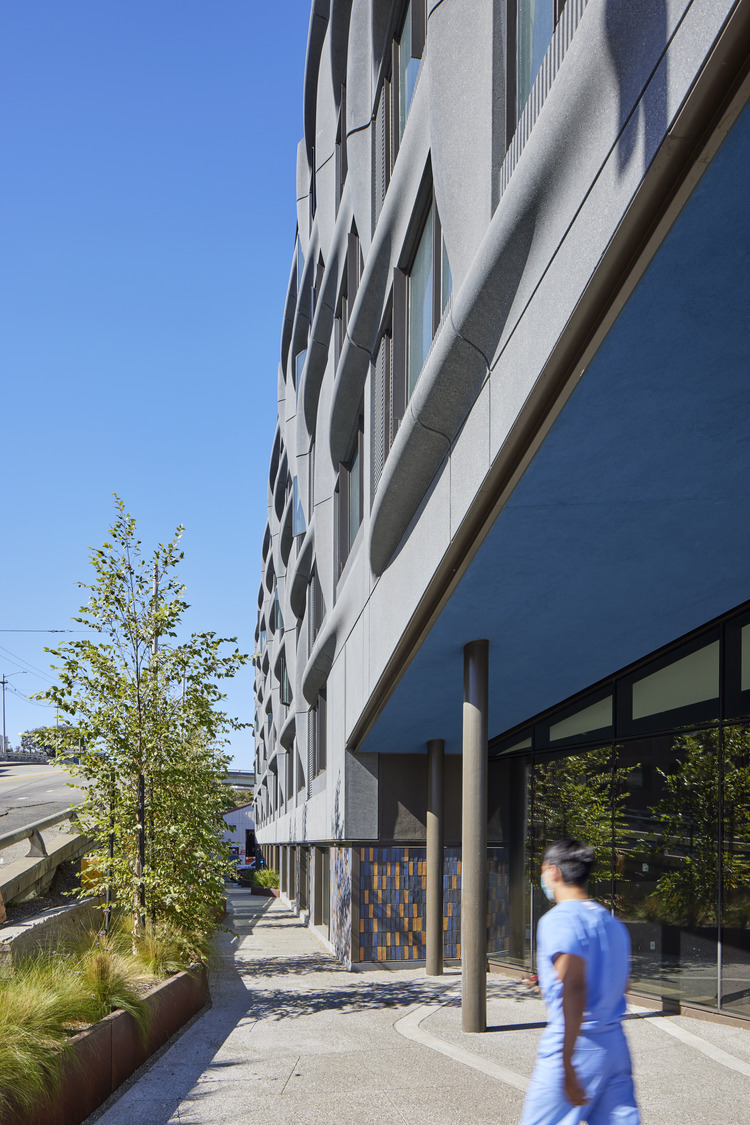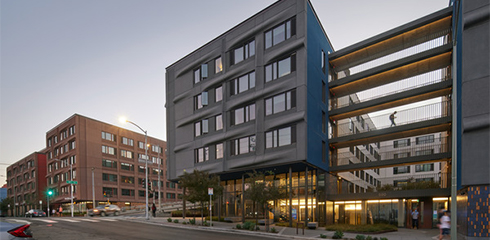© Bruce Damonte
How can affordable housing provide efficiency without disrupting a neighborhood's cultural identity?
The Tidelands provides 595 below-market-rate micro-apartments for over 700 medical students and trainees in San Francisco's Dogpatch neighborhood. A context-friendly response to San Francisco's urgent need for high-density affordable housing, the project draws on its formerly industrial but rapidly evolving urban context to create a convivial, sustainable, humane and functional home for fixed-income emerging medical professionals. Adapting the identity and values of client University of California San Francisco to the lively cultural and arts-focused character of the neighborhood, the project is highly energy efficient, resilient, and community-focused. Born of a hybrid Integrated Project Delivery model designed around collaboration between designers, contractors, the owner, and neighborhood stakeholders, the Tidelands marries high design aspirations with innovative construction techniques to create a welcoming, accessible, and vibrant addition to the Dogpatch.
Through careful massing, material choices, and new green public parklets and paseos, the dense but thoughtfully sited housing project maximizes a small footprint while complementing and reinforcing the character of the neighborhood.
Minimizing environmental impact was a fundamental goal of the project, both for the University and for a neighborhood and city sensitive to overbuilding and conservation of natural resources. The all-electric, LEED Gold complex features a self-shading exterior that blocks unwanted solar heat without sacrificing natural light or views. The need to balance performance with cost to ensure affordability became a productive engine for thoughtful design solutions across The Tidelands, inspiring creative problem solving rather than hindering owner priorities for a timeless building with a minimal carbon footprint. This meant finding healthy building materials that were also affordable, using passive strategies instead of active ones, and coordinating with engineering and construction teams in early phases of development. The Tidelands far exceeds the durability and expected lifespan of comparable market-rate developer housing projects and does so with a significantly smaller environmental impact.
The all-electric LEED Gold buildings feature a lightweight, glass-fiber-reinforced concrete (GFRC) facade composed of rippling panels carefully tuned to shade and modulate solar heat gain without sacrificing natural light or views. Fabricated off-site, the facade panels were installed in multi-unit modules, significantly reducing construction timelines and waste.
Comprising studio, efficiency and two-bedroom microunits 40% below market rate, the Tidelands fundamentally benefits the larger community by improving access to affordable housing, reducing the housing burden on the adjacent neighborhood. The buildings' undulating facades create a unifying identity across street addresses while embracing the neighborhood's free-wheeling character. The project also includes a retail space for a small community-focused grocery store, the addition of two new densely planted mid-block public paseos connecting Minnesota and Indiana streets (connections which haven't existed for decades), new planted setbacks with benches, and two community meeting rooms that are available for reservation by neighborhood groups.
A series of natively planted, low-irrigation outdoor spaces surround and snake through the Tidelands, replacing two dilapidated former warehouses with new habitat for local wildlife. By pulling both buildings back from the overpass that cuts between them, two new mid-block pass-throughs were created, providing relief for people and wildlife, and planted zones for capturing and storing rainwater. Similarly, two interior courtyards interact with the street at open-air circulation bridges, allowing light, air and greenery to spill out to the street. These outdoor spaces offer opportunities for respite and provide a human scale to provide thoughtfully humane and carefully dense housing.


